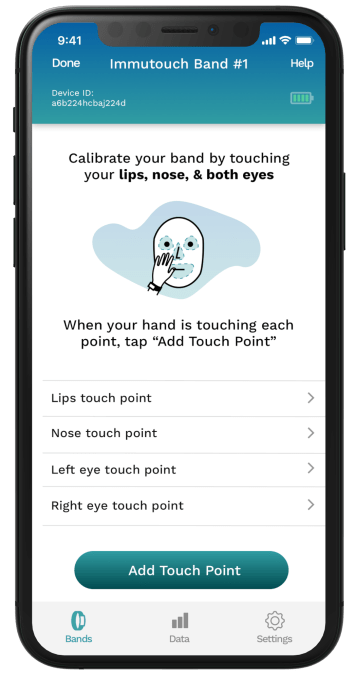Adtech giant Criteo is under investigation by the French data protection watchdog, the CNIL, following a complaint filed by privacy rights campaign group Privacy International.
“I can confirm that the CNIL has opened up an investigation into Criteo . We are in the trial phase, so we can’t communicate at this stage,” a CNIL spokesperson told us.
Privacy International has been campaigning for more than a year for European data protection agencies to investigate several adtech players and data brokers involved in programmatic advertising.
Yesterday it said the French regulator has finally opened a probe of Criteo.
“CNIL’s confirmation that they are investigating Criteo is important and we warmly welcome it,” it said in the statement. “The AdTech ecosystem is based on vast privacy infringements, exploiting people’s data on a daily basis. Whether its through deceptive consent banners or by infesting mental health websites these companies enable a surveillance environment where all you moves online are tracked to profile and target you, with little space to contest.”
We’ve reached out to Criteo for comment.
Back in November 2018, a few months after Europe’s updated data protection framework (GDPR) came into force, Privacy International filed complaints against a number of companies operating in the space — including Criteo.
A subsequent investigation by the rights group last year also found adtech trackers on mental health websites sharing sensitive user data for ad targeting purposes.
Last May Ireland’s Data Protection Commission also opened a formal investigation into Quantcast, following Privacy International’s complaint and a swathe of separate GDPR complaints targeting the real-time bidding (RTB) process involved in programmatic advertising.
The crux of the RTB complaints is that the process is inherently insecure since it entails the leaky broadcasting of people’s personal data with no way for it to be controlled once it’s out there vs GDPR’s requirement for personal data to be processed securely.
In June the UK’s Information Commission’s Office also fired a warning shot at the behavioral ad industry — saying it had “systemic concerns” about the compliance of RTB. Although the regulator has so far failed to take any enforcement action, despite issuing another blog post last December in which it discussed the “industry problem” with lawfulness — preferring instead to encourage adtech to reform itself. (Relevant: Google announcing it will phase out support for third party cookies.)
In its 2018 adtech complaint, Privacy International called for France’s CNIL, the UK’s ICO and Ireland’s DPC to investigate Criteo, Quantcast and a third company called Tapad — arguing their processing of Internet users’ data (including special category personal data) has no lawful basis, neither fulfilling GDPR’s requirements for consent nor legitimate interest.
Privacy International’s complaint argued that additional GDPR principles — including transparency, fairness, purpose limitation, data minimisation, accuracy and integrity and confidently — were also not being fulfilled; and called for further investigation to ascertain compliance with other legal rights and safeguards GDPR gives Europeans over their personal data, including the right to information; access; rights related to automated decision making and profiling; data protection and by design and default; and data protection impact assessments.
In specific complaints against Criteo, Privacy International raised concerns about its Shopper Graph tool, which is used to predict real-time product interest, and which Criteo has touted as having data on nearly three-quarters of the worlds’ shoppers, fed by cross-device online tracking of people’s digital activity which is not limited to cookies and gets supplemented by offline data; and its Dynamic Retargeting tool, which enables the retargeting of tracked shoppers with behaviorally targeted ads via Criteo sharing data with scores of ‘partners’ including publishers and ad exchanges involved in the RTB process to auction online ad slots.
At the time of the original complaint Privacy International said Criteo told it it was relying on consent to track individuals obtained via its advertising (and publisher) partners — who, per GDPR, would need to obtain informed, specific and freely given consent up-front before dropping any tracking cookies (or other tracer technologies) — as well as claiming a legal base known as legitimate interest, saying it believed this was a valid ground so that it could comply with its contractual obligations toward its clients and partners.
However legitimate interests requires a balancing test to be carried out to consider impacts on the individual’s interests, as part of a wider assessment process to determine whether it can be applied.
It’s Privacy International’s contention that legitimate interest is not a valid legal basis in this case.
Now the CNIL will look in detail at Criteo’s data processing to determine whether or not there are GDPR violations. If it finds breaches of the law, the regulation allows for monetary penalties to be issued that can scale as high as 4% of a company’s global turnover. EU data protection agencies can also order changes to how data is processed.
Commenting on the CNIL’s investigation of Criteo’s business, Dr Lukasz Olejnik, an independent privacy researcher and consultant whose research on the privacy implications of RTB predates all the aforementioned complaints told us: “I am not surprised with the investigation as in Real-Time Bidding transparency and consent were always very problematic and at best non-obvious. I don’t know how retrospective consent could be reconciled.”
“It is rather beyond doubt that a thorough privacy impact assessment (data protection impact assessment) had to be conducted for many aspects of such systems or its uses, so this particular angle of the complaint should not controversial,” Olejnik added.
“My long views on Real-Time Bidding is that it was not a technology created with particular focus on security and privacy. As a transformative technology in the long-term it also contributed to broader issues like the dissemination of harmful content like political disinformation.”
The CNIL probe certainly adds to Criteo’s business woes, with the company reporting declining revenue last year and predicting more to come in 2020. More aggressive moves by browser makers to bake in tracker blocking is clearly having an impact on its core business.
In a recent interview with Digiday CEO Megan Clarken talked about wanting to broaden the range of services it offers to advertisers and reduce its reliance on its traditional retargeting.
Criteo has also been investing heavily in artificial intelligence in recent years — ploughing in $23M in 2018 to open an AI lab in Paris.


 (@mims)
(@mims) 

